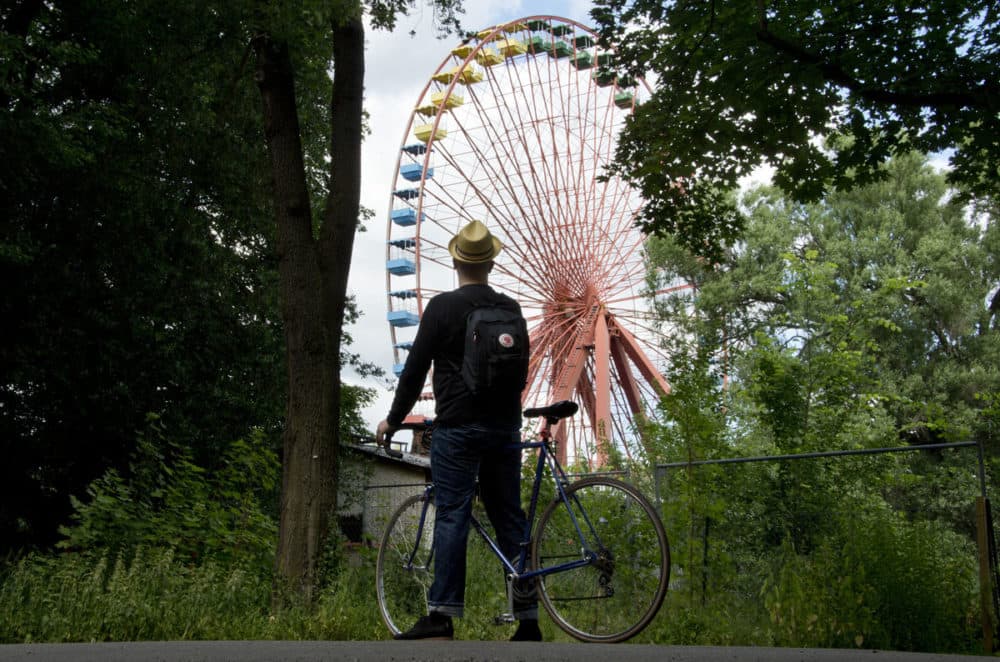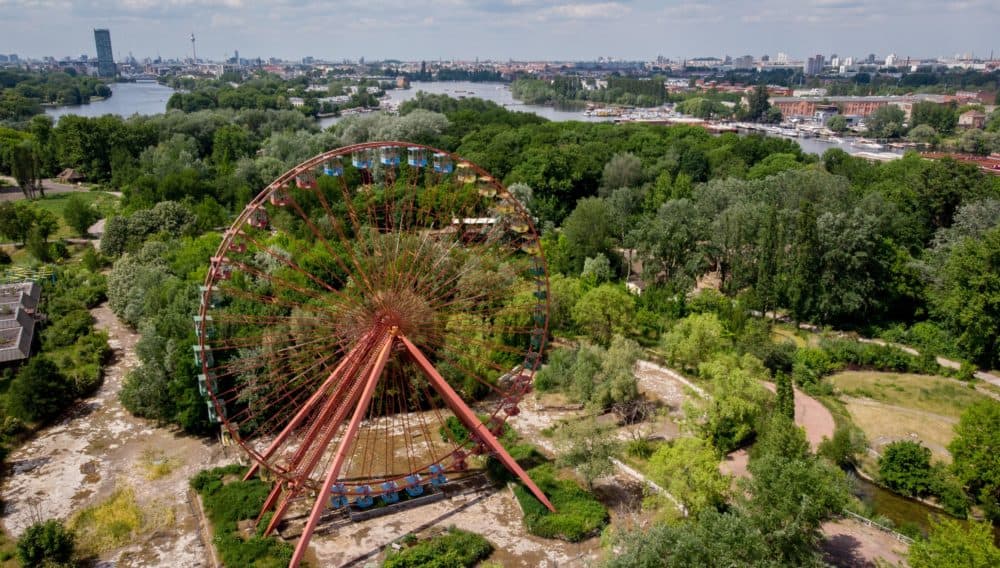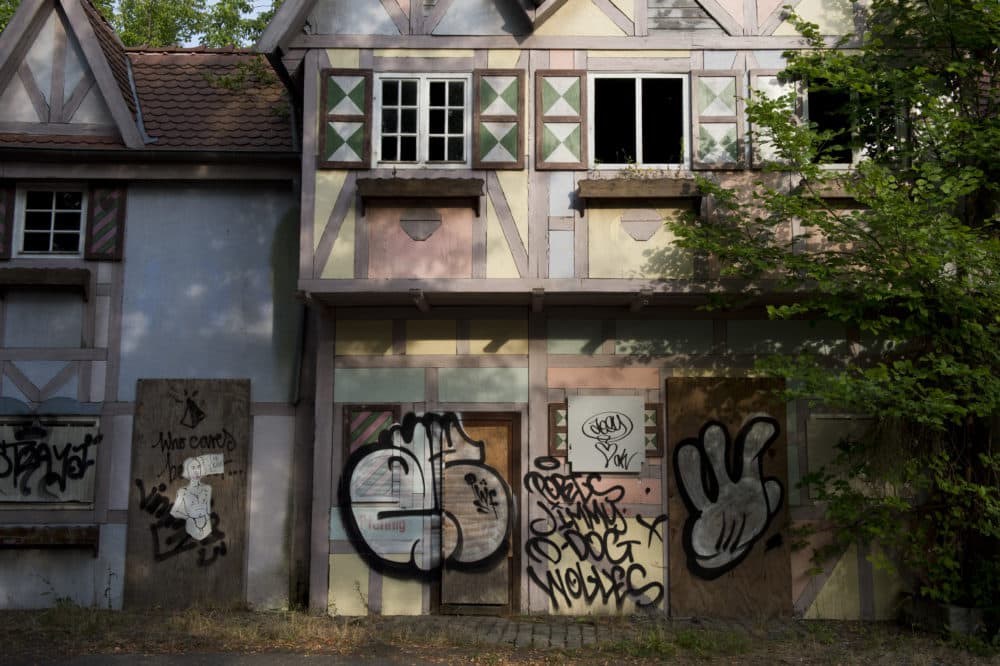Advertisement
There's An Abandoned Amusement Park In The Middle Of Berlin

There's an empty 70-acre amusement park smack in the middle of Berlin that has stood almost unchanged since it was abandoned in the early 2000s.
The place that today is called Spreepark was first developed in 1969 in what was then East Berlin, eight years after the rise of the Berlin Wall. That's right: an amusement park in the former-communist, Soviet-allied German Democratic Republic.
But the organizers in the East deliberately chose not to call the space an "amusement park," says Tim Gärtner, project manager at Grüne Berlin, the company that owns the property now.
"They called it 'kulturpark' because they initially, right away, wanted to illustrate it's more than just amusement," Gärtner says. "That we wanted to educate [East Germans] and offer them culture.
"The initial idea was something they saw in the West, and had the feeling they needed in the East as well."
'All Buildings Were Filled Up With Trash'
The park was built along the Spree River. It features a Ferris wheel, carousel-swing ride and snack stands.
Jana Sotzko, a born-and-bred East Berliner, says her favorite ride was a roller coaster.
"It was this strange construction where you went up and down a lot, and it always sounded like the thing was going to break apart at any minute," Sotzko says. "So being on that was more of the thrill of, 'Will it hold?' So that was, as a kid, or as a teenager, that was the most fun ride, and the most thrilling one for me."

After the wall fell in 1989, Spreepark was contracted to new operators — the Witte family, headed by husband-and-wife team Norbert and Pia Witte, who tried to transform the facility into a Western-style amusement park.
"They became responsible for the Spreepark at that time. They invested a lot of money," Gärtner says.
Efforts to revitalize the old GDR-run facility included new attractions to compete with other amusement parks in western Germany: water rides, an English village and a stage.
At first, the improvements seemed to work, with visitors reaching as high as 1.5 million people per year. But slowly, ticket prices went up and limited parking took its toll. Attendance suffered, leaving the Witte family more than 10 million euros in debt.
"In retrospect, yeah it was kind of trashy," says Sotzko. "It was also really small … If you look at the descriptions it's in a tiny area, you'd be in the geisterbahn [ghost train ride] then you'd walk 5 meters and there were swans, and then you walk and there's other things. So random. It looks like people just bought random things and put them in this area.
Advertisement
"Not to sound offensive, but it was not really a very great fun park. No."
In 2001, the park declared bankruptcy. It closed the following year.
The property has been largely abandoned since the park closed. Graffiti is rampant. Many of the large dinosaur sculptures have disappeared. Spreepark became a dumping ground.

Gärtner says his company gained control of the property in 2016, and has spent most of that time cleaning up the mess left behind by vandals and underground partygoers.
"All buildings were filled up with trash. Not only things from the park, but like, house garbage," says Gärtner. "In the big hall there was a room, and it was absolutely filled up with Xerox machines. We found them, and we were just like, 'What the hell? What did they do with this many Xerox machines?' "
An Uncertain Future
What to do with Spreepark and its 70 acres of land is a big question in Berlin.
Zoning restrictions limit the property’s commercial potential. So one option favored by the new operators is using Spreepark to promote the arts.
"We have a lot of art in Berlin, and even more than exhibition spaces, we have a lot of artists in Berlin, which is great," says Gärtner. "We don't have a lot of art in open spaces, in public spaces, like immersive art, where people can go inside, feel things, like multisensual stuff — playing with light, playing with colors. So, it can be a very good place for that."
Over the last 50 years, Spreepark has mirrored the condition of Berlin: First, as a propaganda tool used in the communist East. Then as a renewed capitalist business, trying to find its footing. Finally, as a haven for partiers and graffiti artists.
And much like the German capital, Spreepark will have to decide what the next chapter holds.
This segment aired on August 8, 2018.
